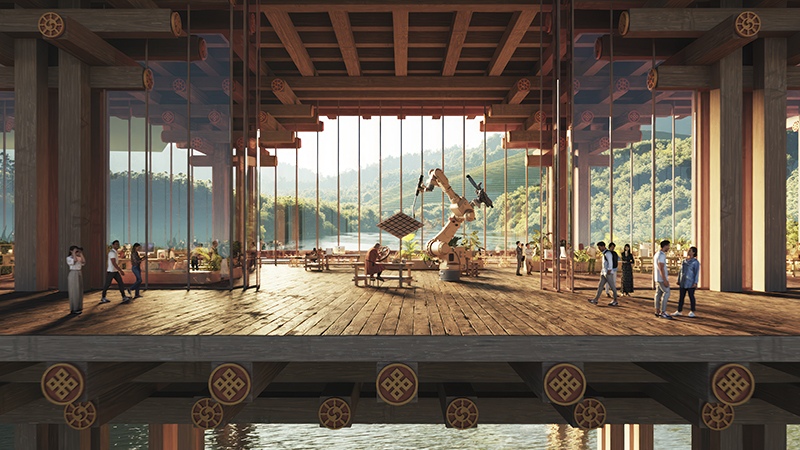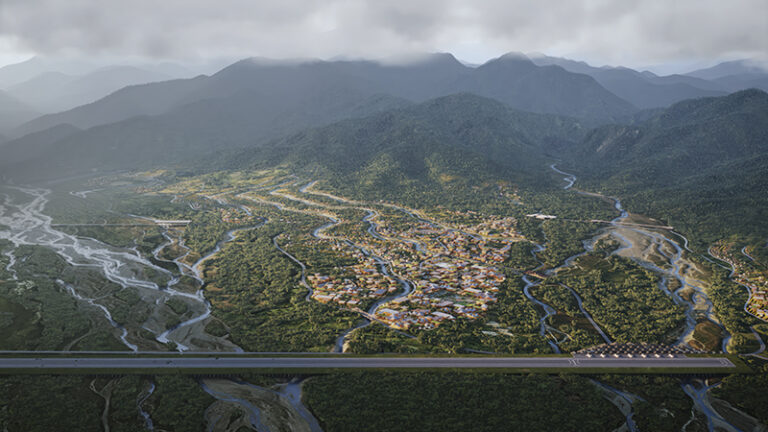
BIG's Gelephu Master Plan: A Vision of Mindfulness and Sustainability in Bhutan
In December, 2023, Bjarke Ingels Group (BIG), in a collaborative effort with Arup and Cistri, unveiled an ambitious master plan for Gelephu, a proposed ‘Mindfulness City’ in Bhutan. His Majesty King Jigme Khesar Namgyel Wangchuck introduced this vision during Bhutan’s 116th National Day, aligning with the country’s status as the world’s first carbon-negative nation. Spanning over 1000 km2, the master plan intricately weaves Bhutanese culture, Gross National Happiness principles, and spiritual heritage into the fabric of the city. Located in Southern Bhutan, near the India-Bhutan border, Gelephu is set to leverage its strategic position to boost economic growth and provide local opportunities, with plans including green technology initiatives, educational facilities, and infrastructural developments like an international airport and railway connections.

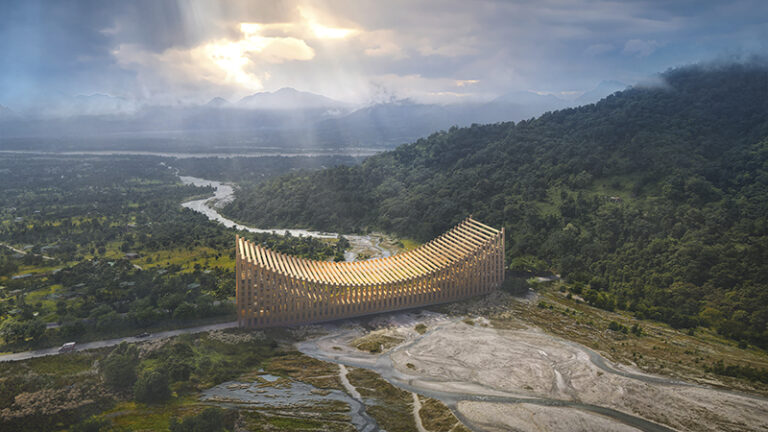
The Mindfulness City, enveloped by Bhutan’s diverse ecosystems, aims to enhance the nation’s rich biodiversity. It features interconnected ecosystems and vibrant neighborhoods, inspired by 35 rivers and streams, with neighborhoods mimicking paddy fields forming terraces from hills to valleys. This arrangement allows a natural transition from rural to urban areas, emphasizing a seamless integration of different living environments. BIG’s design envisions Gelephu as a city defined by its bridges, reminiscent of traditional Dzongs, serving as cultural landmarks while connecting nature and people, past and future, local and global. These “inhabitable bridges” act as civic and cultural hubs, representing the nine domains of Gross National Happiness.
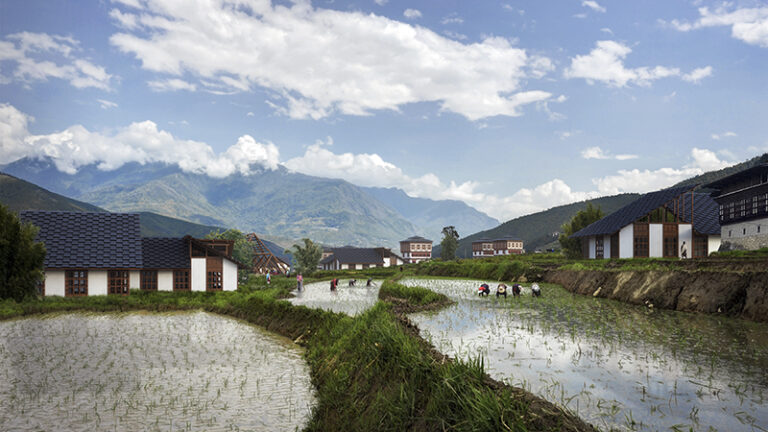
BIG aims to create the world’s first carbon-negative community in Gelephu, Bhutan’s Mindfulness City. Under BIG’s innovative guidance, Gelephu is evolving into a model of urban harmony and environmental integrity, divided into eleven creatively planned neighborhoods. These areas exemplify the Mandala principle, radiating a deep sense of unity and balance across their communal spaces. From the sparsely populated northern edges to the bustling southern urban core, Gelephu exemplifies the perfect blend of peaceful living and urban vibrancy.
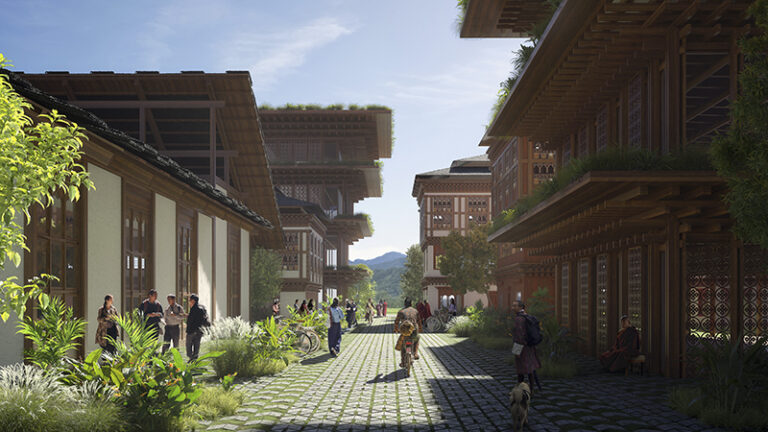
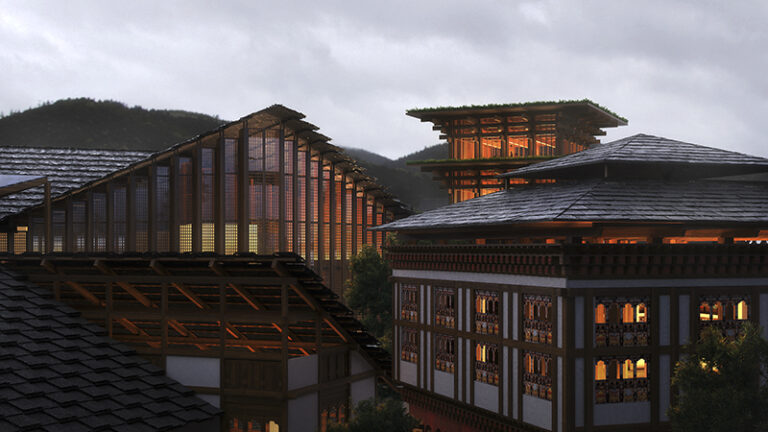
Paddy fields placed along the rivers in Gelephu not only act as barriers against flooding but also support local wildlife, effectively combining the town’s agricultural tradition with a commitment to environmental conservation. BIG’s proficient design interlaces the city’s architecture with the rich cultural heritage of Bhutan and principles of modern urban development, nurturing an urban landscape that values community bonds and cultural identity, all while embracing modern conveniences.
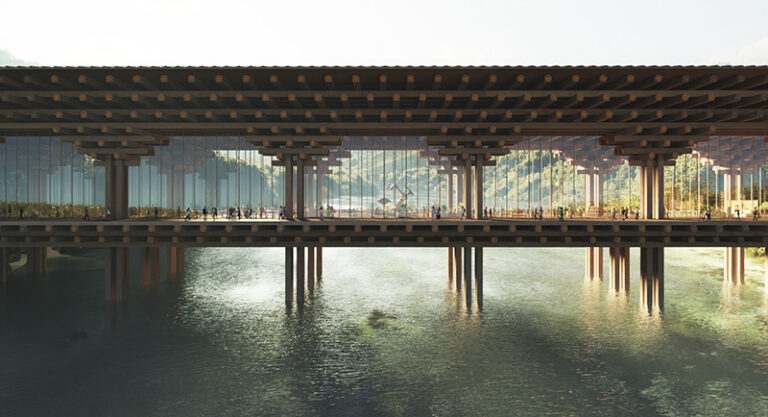
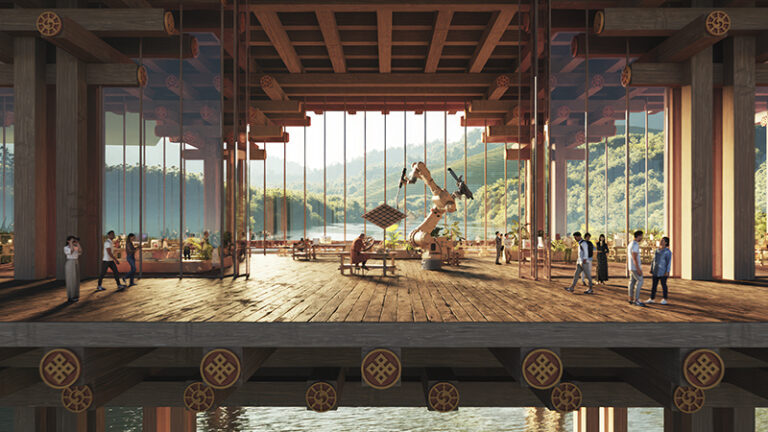
The neighborhoods, shaped by the natural flow of waterways, are linked by three main pathways that elevate their function beyond mere transportation, turning them into lively conduits of civic and cultural activity. These bridges, a brainchild of BIG, symbolize the nine domains of Gross National Happiness, turning routine paths into vibrant hubs of community interaction. The city offers a variety of facilities and cultural landmarks, such as a new airport, a Vajrayana spiritual center, a healthcare center that integrates Eastern and Western medicine, a university, and a greenhouse that combines classical agriculture with modern technology. There is also a cultural center that showcases the Bhutanese way of life and a traditional market brimming with Bhutanese textiles. These bridges aim to enhance the connectivity of Gelephu, enriching the lives of both residents and visitors.
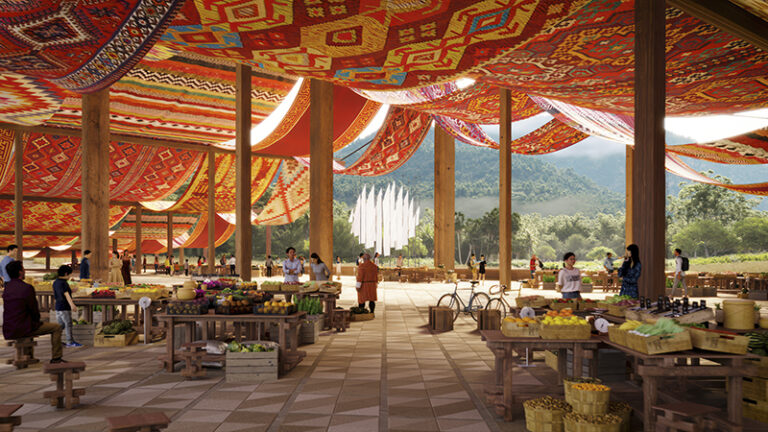
A standout among these architectural wonders is the bridge resembling a hydroelectric dam on the city’s western edge, a structure that doubles as a place for reflection and spiritual connection, offering tranquil views and a welcoming temple. The city’s streets, paved with sustainable materials, demonstrate Gelephu’s dedication to eco-friendly urban design, allowing natural water absorption to alleviate pressure on drainage systems. By using local materials such as wood, stone, and bamboo in new constructions, BIG taps into the essence of Bhutanese artistry, ensuring the city’s expansion remains aligned with its cultural and environmental principles.
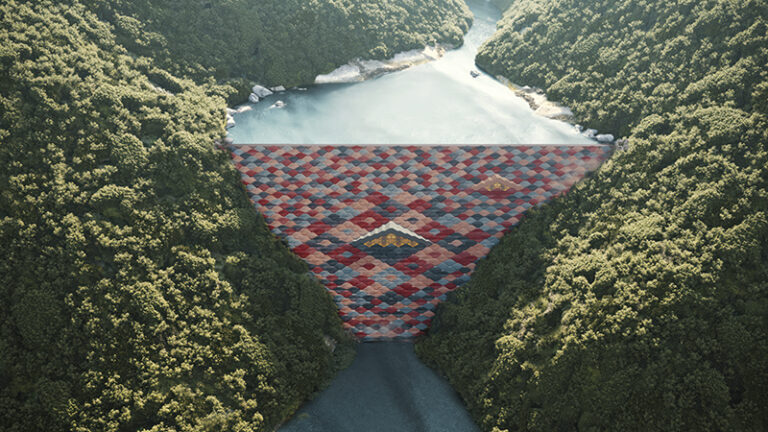
BIG’s architectural prowess extends beyond Gelephu, encompassing several significant projects globally. These include the residential development Park Rise in Ellinikon’s Little Athens, the sustainable Vollebak Island in Nova Scotia, and the One High Light development in New York nearing completion. Additionally, BIG has recently triumphed in a competition for a major European Union research project, further showcasing their commitment to innovative and sustainable architectural design.
